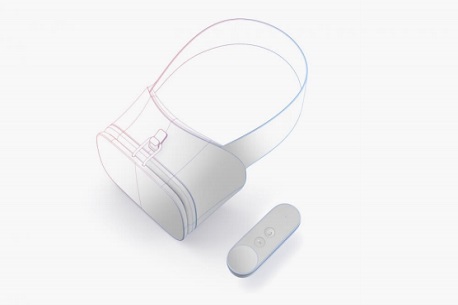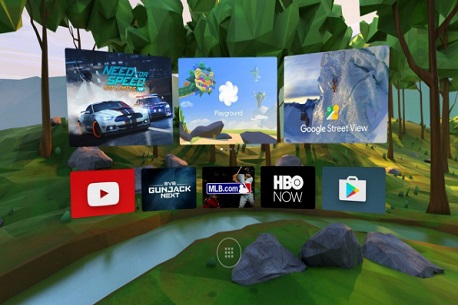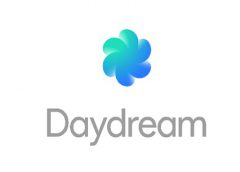At its I/O last Wednesday Google introduced Daydream, a VR platform build on Android N. To say I’m excited about it is the understatement of the century.
The Future of Mobile Virtual Reality
I think we can all agree that mobile VR is what will take VR headsets to the mainstream. Systems like Oculus Rift, PlayStation VR and the HTC Vive that are comparatively expensive and tethered to a computer or other stationary device will always attract Gamers and professionals, but mobile VR will be what will become the standard in most people’s households. I know that many tech journalists, and many virtual reality device manufacturers for that matter, believe that the future of mobile VR is in standalone headsets rather than using our mobile phones to provide for most of the tech, but in my opinion the way of cardboard and Samsung Gear VR, among others, is the way to go. If VR is supposed to reach the masses it needs to be as affordable as possible.
As the name suggests, standalone headsets incorporate all the tech that is needed in the headset, making it rather expensive to produce. After all screens, processors, and sensors don’t come cheap, especially if we’re talking high-resolution screens as needed for a nice VR experience. If we go the way of Daydream though all tech will come with our mobile phones, a device that we own already.
While devices like the Samsung Gear VR enhance the VR experience with their own gyro, accelerometer and proximity sensors, making movements much smoother, the original Google VR viewer, Cardboard, never had any of that. It is basically just a piece of cleverly folded cardboard, with some economic plastic lenses in it. If you’ve never heard about virtual reality and want to give it a try without breaking the bank I strongly recommend you try it out. You can get Cardboard sets as cheap as €19 in places like Amazon. That’s how I got hooked to VR. Daydream will take this a step (or ten) further.
What Distinguishes daydream from Cardboard?
Though there are plans to make standalone headsets running on Daydream in the future, initially it’s intended to be a VR ecosystem for Android phones. Unlike Cardboard though it’ll only work with new phones, mainly because they have to provide all the hardware, more advanced sensors being one of them. Additionally, manufacturers will be requested to provide advanced controllers and sophisticated, comfortable headsets too. Google will provide the software. It’s a huge step up from Cardboard, making the experience comparable to Samsung Gear VR, but with most of the tech in the phone. The general idea though is the same. Use the device we all have already and enable it to provide us with high-quality VR experiences.
“Our intention is to operate at Android scale, meaning hundreds of millions of users using Daydream devices,” says Brahim Elbouchikhi, Senior Product Manager, Virtual Reality at Google. Daydream will be will be built as a core element of the entire Android ecosystem providing almost every Android user with the opportunity to get into VR at a very economic level. If that won’t jumpstart the VR revolution, I don’t know what will.
So, how does it work?
Let’s split the Daydream ecosystem into hardware and software.
On the hardware side, Cardboard has never been very interactive. The only control you have on the device is a magnetic switch which enables you to select an option when looking at it. That makes the device great for watching YouTube videos or play simple games, but that’s about it. Daydream devices, on the other hand, will come with a very clever motioncontrol remote that works a bit like a Wii controller giving you far more advanced control over your VR environment. It contains a touchpad, buttons, gyroscope, a magnetometer, an accelerometer, which will enable it to understand perfectly where it is in 3D space. The connection between controller and headset will be made via Wifi and Bluetooth Low Energy (BLE). Of course, it will still allow you to navigate VR versions of Youtube, Photos, Google Play Movies and Street View, but due to partnerships with companies like Ubisoft, Electronic Arts and many others sophisticated games and applications suddenly become a reality in mobile VR.
There’s also that thing called “latency”. It is the time between a sensory input (for example a head movement) and the time the pixels update. It is an important factor in creating a truly believable, head-tracked virtual reality. Since Cardboard works with any halfway decent phone it has never been very good in this department. Samsung included better sensors in its Gear Vr headset and managed to reduce latency significantly. Daydream will rely on the technology present in our mobile devices. That means it’ll have to become much better. Google has already partnered with manufacturers like Samsung, LG, HTC, Huawei, ZTE, Xiaomi, Asus, and Alcatel to make sure the standards it sets necessary to run daydream on mobile devices will be met.

On the software side Daydream will now reach the same sophistication as other providers, like Oculus, already offer. There will be a full visual interface that seems to look a bit like the home screen in my Samsung Gear VR (which is a good thing). It’ll allow you to launch apps and menus. It’ll also include a VR version of the Google Play Store, enabling you to download applications right there in VR . Those apps will take a step up too. Google encourages developers to raise the bar on cardboard and create apps with a longer entertainment value. “Cardboard apps were about fun, snackable, short experiences, largely noninteractive,” said Brahim Elbouchikhi. “Daydream apps are quite the opposite. They’re about immersive content, long form, highly interactive.” The use cases for that kind of technology are endless. Of course, there will be games, but I find the practical use cases far more interesting. There is 3D data visualisation, you can practice giving a speech in front of hundreds of people, education like learning foreign languages and much, much more.

Is This the Promised Virtual Reality Revolution?
My opinion about the future of VR seems to differ from that of most experts. When talking to tech journalists and VR gurus I often get to hear that the future of VR can not be stopped anymore, but it will still take several years to become a mainstream product. I beg to differ. Google has just made a huge step to make advanced virtual reality an affordable product accessible for anybody with a compatible mobile device. Brahim Elbouchikhi says, “In a couple years, we will have hundreds of millions of users on Daydream ready devices.” and I strongly agree with him. I know my next phone will be daydream compatible.
